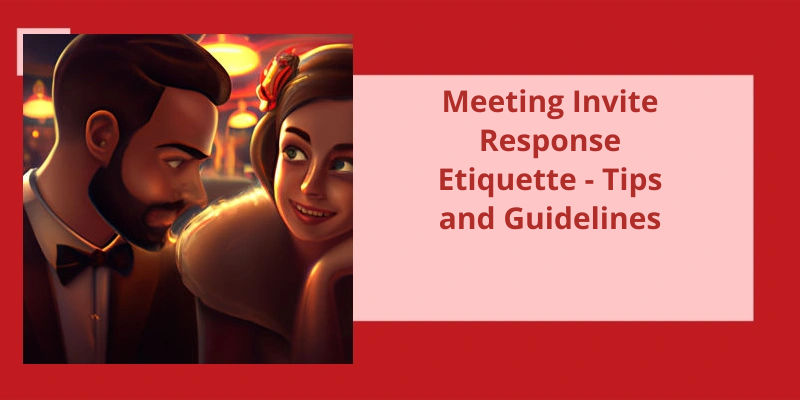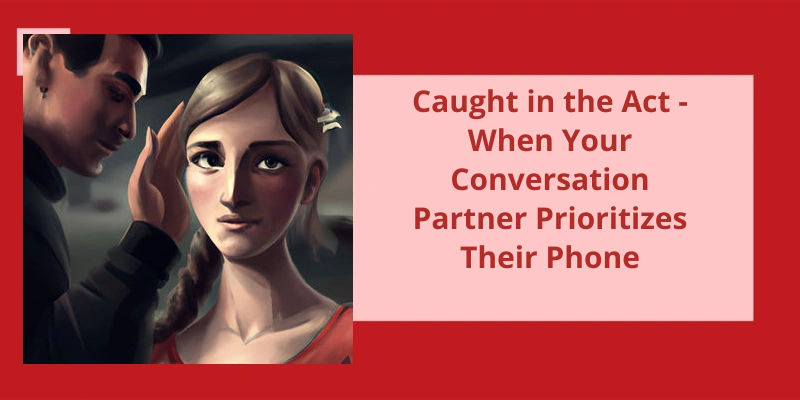Hey, we haven't really been talking lately. I’ve been feeling a sense of distance and disconnection, and I just haven't known how to bring it up. Can we check in? I know I've gone radio silent and my communication has shut down. It's been bothering me because I value our connection and I'm not sure what's going on between us, but I feel like we haven't really spoken in quite some time. I miss you and I want to address any tension or silence that may have crept into our conversations.
How Do You Handle Silence?
When it comes to handling silence in a text conversation, it’s important to recognize that silence can have a purpose. It isn’t always necessary to fill the void with constant chatter. Instead of viewing silence as an awkward or uncomfortable pause, try to embrace it as an opportunity for deeper connection.
One way to savor the silence is by reminding yourself that it serves a purpose in all conversations. By recognizing and appreciating the role of silence, you can learn to navigate and utilize it in a way that benefits the conversation.
Instead of rushing to fill the silence with meaningless words or questions, take a deep breath and give yourself a moment to collect your thoughts. This won’t only help you respond more thoughtfully, but it will also give the other person the opportunity to do the same.
Additionally, it can be helpful to practice waiting a couple of seconds after someone has stopped talking before responding. This allows for a natural pause and prevents any potential interruptions or talking over each other. By giving the conversation a slight pause, you create an environment that encourages deeper and more meaningful communication.
Finally, it’s important to avoid using filler sounds or words during moments of silence. Often, people use filler sounds like “um” or “uh” to fill the void, but these can actually detract from the conversation and make it appear less confident. Instead, embrace the silence and use it as an opportunity to gather your thoughts and respond with clarity and intention.
Moreover, by avoiding filler sounds and embracing the power of silence, you can foster deeper connections and enhance the overall quality of your conversations.
The Benefits of Silence in Face-to-Face Conversations
While breaking the silence in a text conversation can be important, sometimes silence in face-to-face conversations can have it’s own benefits. Silence allows both parties to reflect on what’s been said, giving them time to process their thoughts and emotions. It can also create a space for deeper understanding and empathy to develop. Silence can be a powerful tool for listening, allowing each person to fully absorb and consider the other’s words before responding. It can also provide an opportunity for tension or conflict to naturally resolve itself without unnecessary interruption. So while breaking the silence in a text may be necessary, embracing moments of silence in face-to-face conversations can actually enhance the overall quality of communication.
In order to avoid those awkward silences in conversations, there are several simple yet effective strategies you can employ. One approach is to begin with a genuine compliment, which should then be followed by a related question to keep the conversation flowing smoothly. Additionally, asking story-generating questions or sharing a personal connection to the topic can help to break the silence and engage the other person. Another useful tactic is to plan some conversation starters in advance, ensuring that you’re equipped with interesting topics to discuss. Lastly, when you’re asked a question, try to answer in more depth, providing additional information or sharing personal anecdotes.
How Do You Break a Silence Conversation?
When it comes to breaking the silence in a text, there are several effective strategies you can incorporate to avoid those awkward and unwanted moments of silence. One approach is to start the conversation off with a genuine compliment, followed by a question. This not only helps to initiate dialogue, but it also shows the other person that you’re interested in them and their response. For example, you could say, “Hey, I saw your latest Instagram post, and your photography skills are amazing! How did you come up with that shot?”. This approach allows for a positive conversation opener and sets the tone for further engagement.
Another effective technique is to ask a story-generating question. People love to share personal experiences and anecdotes, so asking a question that prompts them to recall a memorable or funny story can be a great way to keep the conversation flowing. For instance, you could ask, “Whats the most interesting place youve ever traveled to and why?”. This not only encourages the other person to share a story but also provides an opportunity for you to connect on a deeper level and find common interests.
If you’ve a personal connection with the topic at hand, it’s important to let the other person know. Sharing personal experiences or connections can create a sense of familiarity and make the conversation more relatable. For example, if youre discussing a recent movie release, you could say, “I actually saw that movie too and really loved the plot twist at the end. What did you think of it?”. By expressing your own thoughts and experiences, you’re inviting the other person to do the same, thereby breaking the silence and fostering a more engaging conversation.
Planning some conversation starters ahead of time can also be beneficial in avoiding those awkward moments of silence. Think about some interesting topics or current events that you can bring up to keep the conversation flowing. This could be anything from a new book youve read to a recent news article that caught your attention.
In addition, when someone asks you a question, make sure to provide a response with depth. Instead of giving a simple one-word answer, elaborate on your thoughts, emotions, or experiences related to the question. This allows for a more meaningful exchange and gives the other person something to respond to. By providing a thoughtful response, youre actively contributing to the conversation and encouraging the other person to do the same.
Whether it’s starting with a genuine compliment, asking story-generating questions, sharing personal connections, planning conversation starters, or responding with depth, these strategies can help to avoid awkward moments of silence and create engaging, meaningful conversations in text.
Source: How do I start a conversation or break the awkward silence?..
When it comes to challenging questions, sometimes the best approach is to embrace the rule of awkward silence. Instead of rushing to respond, taking a moment to pause and reflect can lead to more thoughtful and deliberate answers. The power of this rule lies in allowing yourself the time and space to consider your response before speaking.
What Is the Rule of Awkward Silence?
The rule of awkward silence is essentially a technique used in conversations to create a moment of discomfort and anticipation. When faced with a challenging question, instead of blurting out an immediate response, you take a deliberate pause. This allows you to gather your thoughts and think deeply about how you want to answer. The length of this pause can vary, lasting anywhere from a few seconds to even longer durations like 10 or 15 seconds.
It encourages individuals to consider their words carefully and respond in a more thoughtful and intentional manner. By taking this moment of silence, you demonstrate that you’re giving the question the attention it deserves and not rushing into an impulsive reply.
This technique can be particularly effective in situations where the question is complex or requires thoughtful reflection. By allowing yourself to pause and think deeply, you give yourself time to organize your thoughts and formulate a well-considered response. This can lead to more meaningful and engaging conversations, as it shows that you’re truly engaged and taking the conversation seriously.
However, it’s important to use the rule of awkward silence judiciously. Overusing it can make the conversation feel forced or staged, and it may not be effective in all situations. It’s crucial to read the dynamics of the conversation and consider the context before employing this technique. The goal is to use it as a tool to enhance communication and encourage thoughtful responses rather than as a tactic to manipulate or control the conversation.
When encountering the silence treatment, it’s important to respond in a way that promotes understanding and resolution. Rather than resorting to unhelpful responses, there are several approaches that can be utilized. These include naming the situation, using ‘I’ statements, acknowledging the other person’s feelings, apologizing if necessary, and cooling off before arranging a time to address the issue. By employing these strategies, individuals can navigate the challenge of silence in a constructive manner.
How Do You Address Silence?
When faced with silence in a text or any form of communication, it’s important to address the situation and break the silence constructively. One approach is to name the situation directly by acknowledging the presence of silence and expressing the desire to understand what may have caused it. By naming the silence, you open the door for communication and encourage the other person to offer their perspective.
Using “I” statements can also be effective in breaking the silence. By expressing your own feelings and thoughts, you create a safe space for the other person to share their own. For example, saying “I feel confused about the silence between us, and I’d like to understand what happened” can help facilitate an open conversation.
Acknowledging the other persons feelings is another important step. By showing empathy and understanding towards their emotions, you create a supportive environment for communication to thrive. Avoid dismissing or invalidating their feelings, as this can deepen the silence and further hinder resolution.
If you recognize that your own words or actions may have contributed to the silence, it can be helpful to apologize sincerely. Taking responsibility for any hurt caused shows your willingness to mend the relationship and can help dissolve the silence.
Sometimes, a cooling-off period may be necessary before attempting to resolve the issue. Emotions can run high, and addressing the silence in a heated moment may not yield productive results. Take some time to reflect and allow both parties to calm down before arranging a time to have a sincere and focused conversation.
It’s also essential to avoid unhelpful responses when attempting to break the silence. These may include becoming defensive, attacking the other person, or bringing up past grievances. These responses only intensify the silence and prevent resolution. Instead, choose to approach the situation with empathy, patience, and a genuine desire for understanding and resolution. By doing so, you increase the likelihood of breaking the silence and fostering a healthier, more open line of communication.
Nonverbal Communication and Body Language Cues to Look for During Silence
Nonverbal communication and body language play a crucial role in understanding silence during a conversation. When there’s silence, pay attention to various cues to break the silence effectively. Observing the other person’s facial expressions, such as raised eyebrows or a squinted gaze, can indicate surprise or confusion. Gestures like nodding or tapping fingers also provide clues about their thoughts and engagement. Additionally, observe their posture, as slouching may suggest boredom or disinterest, while leaning in demonstrates attentiveness. By being attentive to these nonverbal cues, you can better navigate the silent moments and successfully break the silence in a text or face-to-face conversation.
Conclusion
In today's digital age, where communication has become predominantly text-based, breaking the silence in a text conversation can sometimes feel intimidating and overwhelming. However, it’s essential to address any underlying issues or concerns in order to maintain healthy relationships. By using phrases like "Hey, we haven't really been talking lately," "I’ve been feeling X and just haven't known how to bring it up," or "Can we check in?" you open the door for meaningful dialogue and create a safe space for discussion. It's important to acknowledge that you may have gone radio silent or shut down, expressing your genuine feelings by saying, "I'm not sure what's going on, but I feel like we haven't really spoken in X amount of time." And above all, don't be afraid to convey your missing the other person with an honest and heartfelt "I miss you." By utilizing these phrases and approaching the situation with openness and vulnerability, you increase the chances of breaking the silence in a text in a way that truly works.






